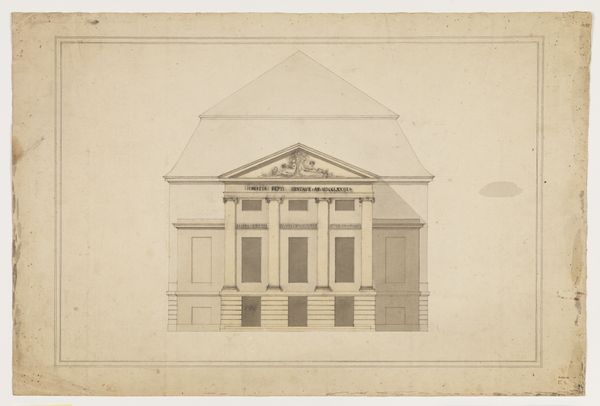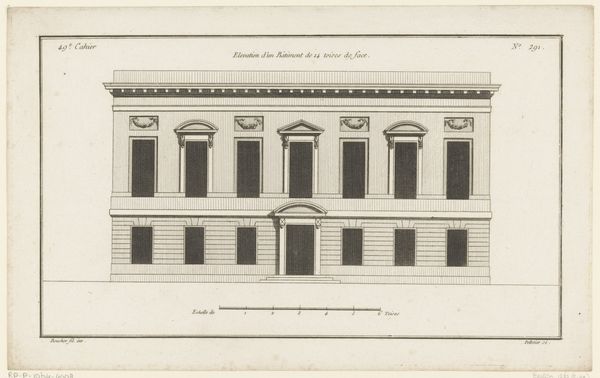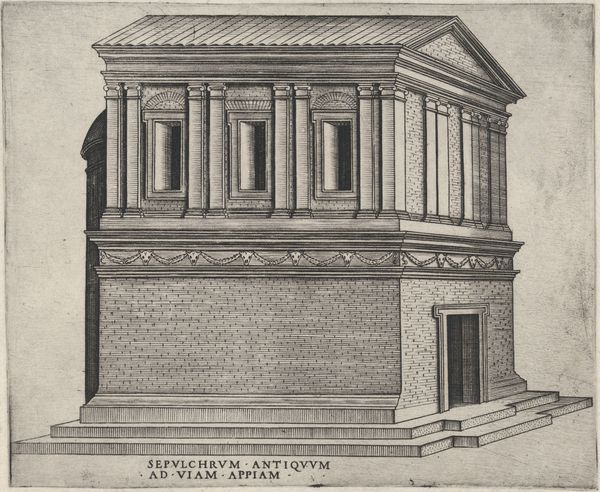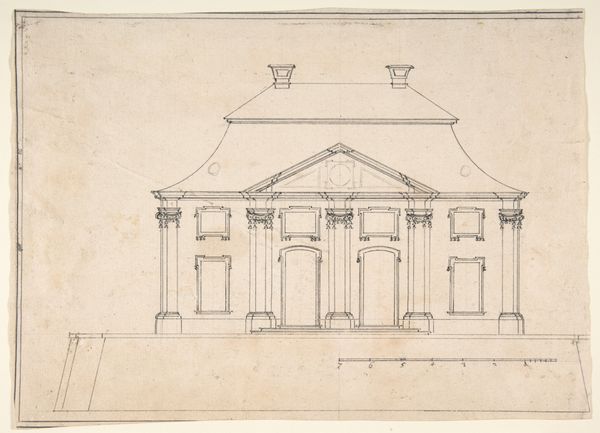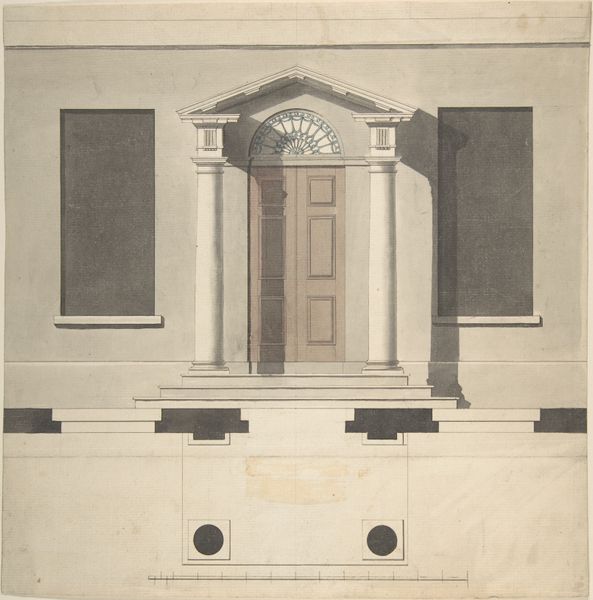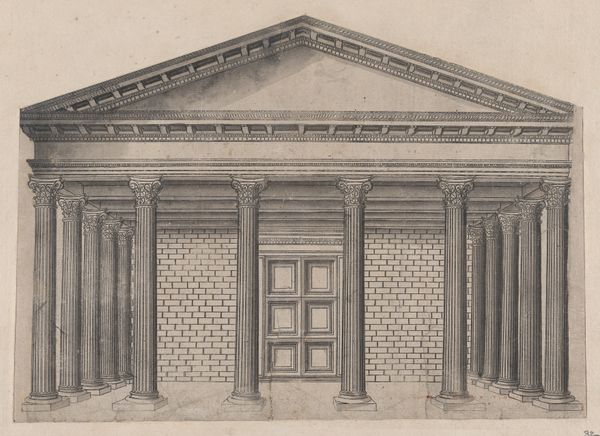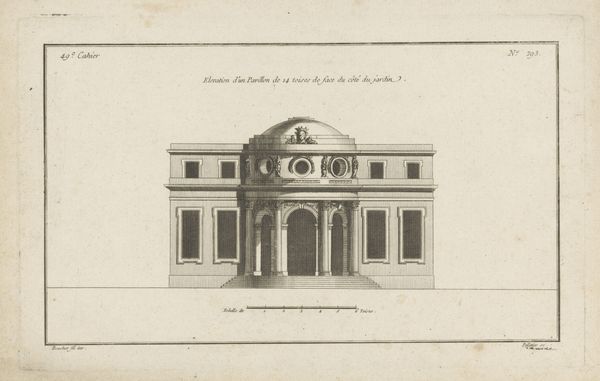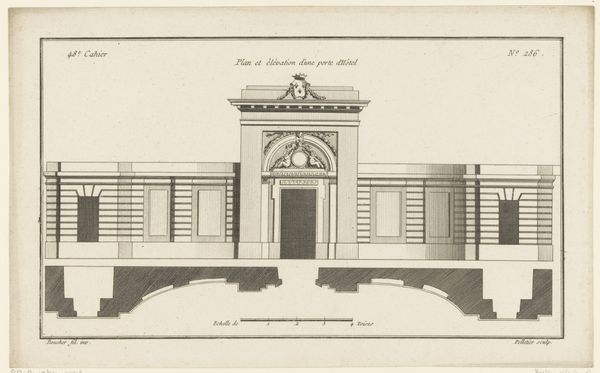
drawing, print, architecture
#
drawing
#
neoclassicism
# print
#
arch
#
cityscape
#
watercolour illustration
#
history-painting
#
watercolor
#
architecture
Dimensions: sheet: 25 1/8 x 31 1/4 in. (63.8 x 79.4 cm)
Copyright: Public Domain
Editor: This is C. Pompetti's "Design for the Façade of an Arsenal" from 1837. It's a drawing, a print, in watercolor - showcasing this impressive Neoclassical building. It looks so stern, almost imposing. What kind of statement was Pompetti trying to make? Curator: Good eye. Considering its intended function, the imposing nature of this design speaks volumes about the public role of arsenals. Neoclassical architecture, with its roots in ancient Greece and Rome, was often used to symbolize power and order. This choice would project a sense of authority and stability. Editor: So it's more than just storing weapons? It's making a statement about government control? Curator: Precisely! The architecture, specifically, embodies that. This building isn't just functional; it’s meant to impress upon the public the strength and legitimacy of the ruling power. Did anything else catch your eye? Perhaps the sculpted figure? Editor: The figure right above the columns! I hadn't really noticed it much. Who is that? Curator: This classical figure likely represents Mars, the Roman god of war. Placed prominently, Mars reinforces the arsenal's military purpose. The symbolic association, coupled with cannon and palm fronds representing victory, were commonly employed for institutions like this. It becomes part of a visual rhetoric about national strength. Editor: Wow, there's so much intentionality packed into every element. Curator: Indeed. Consider the context. The rise of nation-states required that every single piece, down to visual imagery, communicates belonging and promotes stability. The façade’s imagery is key to comprehending its broader influence. Editor: It makes me realize that even architectural drawings can reveal insights into cultural ideologies. Curator: Absolutely. They aren't neutral. Now, if you were a member of the public in the 1830s, what would you think of the building?
Comments
No comments
Be the first to comment and join the conversation on the ultimate creative platform.
